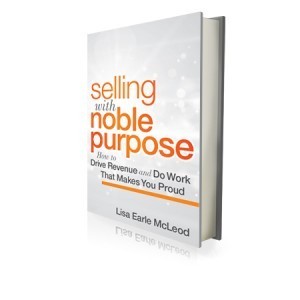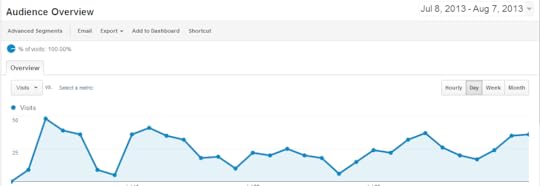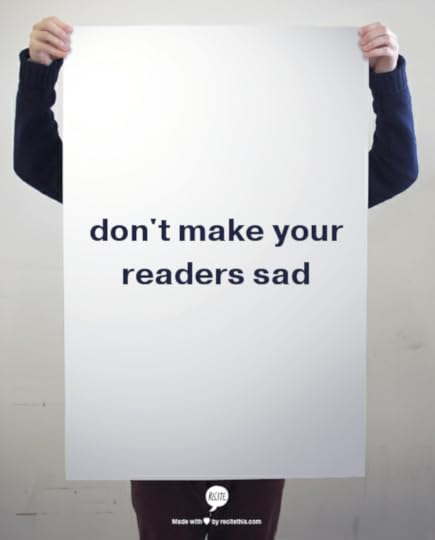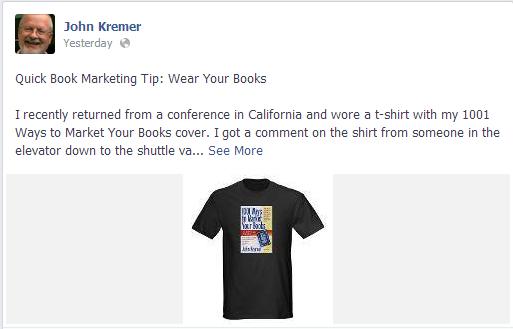Becky Robinson's Blog, page 87
August 15, 2013
Best Book Launch Tips: Prepare for the Sequel
My daughter bounced in her seat while waiting for the start of the movie, Percy Jackson: Sea of Monsters.
Sea of Monsters is the second movie in a series. While we watched Sea of Monsters, my youngest daughter watched Smurfs 2 with my mother.
Preceding the movie: trailers for more kids’ movies: Rio 2, Cloudy with A Chance of Meatballs 2.
Sequels sell.
While I often feel discouraged by the difficulties first-time authors face in marketing and selling their books, I am encouraged that all the work done to make a first book launch successful will increase the chances that the author’s 2nd (3rd, 4th, etc) book will be even more successful.
The investment a first time author makes in marketing is significant. Building an engaged community takes considerable time and effort. If an author builds that community with the idea of creating repeat readers, as preparation and practice for the sequel, the sting of the time and financial investment will be lessened.
The more effective you are in building a community of readers for your first book, the more likely you will be to have a community ready to engage with your next one.
Let every investment you make as a first-time author fulfill a dual purpose: marketing for that book and building a foundation for the follow-up book.
Sequels sell. Your next book will sell more copies if you invest in marketing the first one.
August 14, 2013
If I Could Work My Business Like a Puzzle
My mom opened up the box and dumped 1000 pieces out onto the table. We spread out the pieces, and sorted by color and shape. Soon, we had several piles: frame pieces, blue, fence pieces, face pieces, sidewalk, grass.
All three of my daughters circled the table. Soon, our ten hands got tangled on the table, reaching across the table to grab the pieces we needed.
At the start, Maggie, 6, seemed to be able to find and fit pieces together easily. While I sat sifting, she saw parts of the puzzle come together.
We’re not a puzzle family; this is the first time I remember working on a big puzzle with my mother. (My girls have done puzzles growing up, but none this complex or difficult.)
Over the ten days of my visit to my mom’s lake house, we returned to the puzzle in fits and starts. The girls lost interest and had to be bribed back to the table.
One night, fueled by momentum of seeing parts of the whole come together, my mom and I, who are early birds and early to bed, stayed up until 11:30, finishing the frame and finally believing that we could eventually see the whole puzzle come together.
We created a system of trial and error and focused on one section of the puzzle at a time. We persisted. We finished!
If I could work my business like a puzzle, I would celebrate early wins. I would celebrate every win. Because our puzzle was so difficult, my mom and I did that: we called out every time we saw another piece fit into place.
If I could work my business like a puzzle, I would keep looking at the big picture. The box cover served as an important guide, holding clues to help us see how all the smaller bits fit into the whole. After staring at a pile of blue pieces, I could see variations. Whenever I felt stuck, I would take another peek at the picture to look for anything that would help differentiate the sections of the puzzle.
If I could work my business like a puzzle, I would use a deadline for motivation. I’m headed home tomorrow. Determined to finish the puzzle, I sat down at the table last night right after dinner, tackling the most difficult (and only remaining) section: the blue water of the pool. With my home-going as a hard stop, I rallied my family to join me in working together to finish.
If I could work my business like a puzzle, I would take breaks and step away. I would cultivate patience.
If I could work my business like a puzzle, I would remind myself that momentum motivates and look for opportunities to use momentum to motivate myself and others.
If I could work my business like a puzzle, I would not quit when I face a setback. When we were about two-thirds done with the puzzle, we finished a large section or red and yellow, discovering one piece missing. We searched the house, dug through a vacuum cleaner bag, and came up empty. While we could have quit, we did not allow that one missing piece to derail the rest of our effort.
If I could work my business like a puzzle, I would persist. I would keep trying, one piece at a time, looking at issues this way and that until landing on the perfect fit.
If I could work my business like a puzzle, I would involve others at the finish. When we had about 10 pieces remaining in the puzzle, I called my daughters back to the table. Cami jumped in to help. At first, I felt irritated — her arms blocked my view. And then I realized: my hard work set her up for success. If I would get out of the way and step back, she could shine. Far better to let someone else place that last piece of the puzzle. Far better to let someone else triumph.
If I could work my business like a puzzle, I would concentrate on the 999 pieces that came together, not the one we never found.
August 13, 2013
The Global Leadership Summit From a Social Point of View
I was fortunate enough to attend the Willow Creek Association Global Leadership Summit as a representative of Weaving Influence last week. Seventy-five thousand people in the United States, and roughly 100,000 people around the world, experienced the conference through its innovative satellite campus structure. It is globally recognized for excellence. It shouldn’t come as a surprise that a giant like the #wcagls was wildly successful from a social media standpoint.
So many steps were taken to ensure that social sharing was seamless and simple for attendees. It was clear that much thought, planning, and strategy were put into making tools available to those of us who wanted to use them.
As a social junkie, I was particularly excited. I had done my preparation work prior to arriving. I gathered all of the speaker’s twitter handles in a “note” on my phone to easily copy & paste into tweets. I followed the summit on Facebook & Instagram so I wouldn’t have to waste battery searching. And, just in case, I even brought the back up battery and charger! I was prepared for an all out social media blitz. Little did I know the Global Leadership Summit’s digital team was prepared too.
Here are 4 ways they made social simple:
1. Thinking Ahead: The digital team didn’t wait for the conference to make themselves known. Long before the doors were open or the first speaker stepped up to the microphone, the summit was building its social media presence. The website prominently featured all of the conference’s social accounts. Plus their various channels had some content being shared prior to the event to build excitement. This enabled the digital team to capitalize on the community they had already built when the event arrived.
2. No Guessing: Each attendee was provided with a summit notebook as they entered the auditorium on Thursday morning. Along with the normal, expected and vitally necessary programming notes, there was some other vital information included. Each speaker’s twitter handle was displayed directly under his or her picture along with a few biography bullet points that are perfect for blog posts/articles. There was not one, but two hashtags for the conference – #wcagls and #wcaglsQ. The second allowed attendees to ask questions. As social sharers, we weren’t expected to guess. Information was conveniently provided for us.
3. More Ways Than One: If paper and pen aren’t your speed, even better. The Summit App put all the vital information right in the palm of your hand. It was a brilliant tool. In the “schedule” section under each speaker, attendees had a chance to take notes that could be shared via SMS or twitter. The speaker’s most recent tweets were also streamed there for easy access. Resources (books, DVDs, etc.) could be purchased with tap of a finger and one could even register for next year’s conference. (Apparently several people did because the main floor is already sold out for 2014!) In the “experience” section, attendees could access notes on each speaker’s session, take polls, follow #wcagls’ Twitter or Instagram feed, and even connect with other attendees at their host site. I’ll say it again, what a great tool!
4. Content Suggestions: The digital team also helped by creating and presenting content that made sharing on social media easy. As attendees walked around campus, video screens scrolled quotes from the speakers. On their Facebook page and Instagram feed, pictures of various speakers with memorable quotes were produced in real time to encourage distribution. The team really made social seamless and simple.
If I could propose one area for improvement next year, I might suggest making WIFI available. Using 4G did deplete my battery pretty quickly and had I wanted to use my laptop instead of my phone I would have been out of luck. But, there were ample spots to recharge during breaks. So in the end it wasn’t an enormous hindrance, but perhaps it’s a way to spoil us next year!
From a social media junkie standpoint, the Global Leadership Summit was a dream. The digital team put together world-class resources and made my experience a delight.
Have you been to an event that got social right? What impressed you the most?
August 9, 2013
Featured on Friday: Lisa McLeod
Curious about the Featured on Friday posts? Learn more.
It can be tricky, getting to know one another. Since our client base, as well as our team, are scattered from coast to coast and across multiple time zones, it can take a while to build up momentum for a book launch or social media presence, simply because we’re getting to know one another through emails and phone conferences. But there are times, sometimes almost from the instant we begin to work with a client, when we can get a sense of the success that we will be privileged to be a part of as the Weaving Influence team.
Meet Lisa McLeod
Lisa is a sales leadership expert, keynote speaker, and best-selling author whose books include Selling With Noble Purpose, The Triangle of Truth, and Forget Perfect. Lisa has contributed at Forbes.com and has appeared on the Today Show, NBC Nightly News, and Good Morning America. A fun tidbit about Lisa is that she was voted “Most Talkative” in her high school class, a trait that has served her well throughout her career. Not only has she put her ability to talk to good use, but when she talks, what she has to say is definitely worth listening to!
Where to Find Lisa This Week:
33 Voices – Interview with Lisa
McLeod & More, Inc. Blog – What the Worst Companies to Work For in America Have in Common
McLeod & More, Inc. – How Traditional Sales Management Training Sabotages Purpose
Video – Why Noble Purpose Matters
Connect with Lisa:
Visit Lisa’s website, learn more about engaging her as a Keynote Speaker, follow her on Twitter and YouTube, and connect on Facebook and LinkedIn.
Upcoming Event:
 Lisa wants to change the conversation surrounding sales. More than making money, it’s about making a difference, and it’s time to take a look at the purpose behind the bottom line. During the week of October 21 – 25, 2013, Lisa and the team at Weaving Influence are taking part in a Buzz Week for her book, Selling With Noble Purpose. If you’d like to get involved, we’ll include more information and links in a future Featured on Friday post, so check back soon!
Lisa wants to change the conversation surrounding sales. More than making money, it’s about making a difference, and it’s time to take a look at the purpose behind the bottom line. During the week of October 21 – 25, 2013, Lisa and the team at Weaving Influence are taking part in a Buzz Week for her book, Selling With Noble Purpose. If you’d like to get involved, we’ll include more information and links in a future Featured on Friday post, so check back soon!
Share Your Thoughts: Have you ever heard Lisa speak? If you could ask her any question, what would it be?
August 8, 2013
Best Book Launch Tips: Look Beyond the Numbers
Many authors focus on the numbers, looking to judge the success of their book promotion efforts quantitatively, with book sales as the all-encompassing measure of success. The big prize: making the New York Times Best Seller List.
Authors ask: How many books will I sell in the first week? month? year?
In my experience, other numbers influence the sales numbers.
My hypothesis is that sales in the first week are directly related to the number of actively engaged subscribers on the author’s email list. Also important: the directness of the ask. You won’t sell as many books if you don’t ask people to buy your book. And you need to ask more than once.
When we launch books, we put a lot of emphasis on engaging bloggers to write about and review a book — and I believe that sales are also positively correlated to buzz. Buzz leads to sales.
As my company has grown and our process have become a system, we’ve developed some fancy spreadsheets to capture and record dozens of metrics related to our book promotion efforts.
We evaluate the numbers and adjust our tactics to move toward the results we want to achieve.
I also think it is critical to look beyond the numbers and measure success qualitatively — to look beyond the numbers to the story behind the numbers.
Seth Godin calls this seeing the colors instead of the numbers and warns “ Organizations that do nothing but measure the numbers rarely create breakthroughs. Merely better numbers.”
If you are an author, I encourage you to consider the importance of both kinds of metrics, quantitative and qualitative, colors and numbers. Beyond the numbers, how will you know you’ve been successful? What are the stories you hope to create as you share your book and its message? What difference do you want to make in the world? How will you know when you’ve achieved the results you’re seeking?
Tell me something! Where do you look — beyond the numbers — to measure your success?
August 7, 2013
The Most Important Door-Opener
Bill Treasurer has invited bloggers to write about people who have opened doors of opportunity for them as part of his Leadership Opportunity Blog Fest. I’m pleased to participate to draw attention to this simple and powerful leadership concept, inspired by Bill’s son, Ian: leaders open doors!
While I could list the names of people who have opened doors of opportunity for me along the way — and there are many — as I think through my life chronologically, from college until now, there is one person who has been a part of every open-door moment of my adult life, my husband.
Married only three months, he opened the door as we decided to go to graduate school, despite uncertainty about where we would work and how we would pay for it.
A few years later, we stood, shoulder to shoulder, opening doors for others at the church we partnered together to start.
After the birth of our daughter, his constant support and hard work opened the door for my dream of staying home with my children during their early years.
When I decided to pursue a career, he held the doors open wide, encouraging and cheering me on at every step.
He uses his vacation time to stay with our children when my work requires travel and listens patiently while I share the ups and downs of my journey as an entrepreneur. His secure career, income, and insurance allow me to take risks and open doors for others as I build my business, giving me true freedom to choose.
Most recently, my husband opened a door of insight to help me see myself in a new way. I was sharing a struggle in my business, and he recounted a conversation with a co-worker about politics and how the government can encourage the creation of new jobs.
“The government doesn’t create jobs,” he said. “People do. You are creating jobs.”
Because of his constant encouragement and support, my husband is the most important door-opener in my life.
Tell me something! Who is the most important door-opener in your life?
This post is part of Leadership Opportunity Fest Blog Tour, hosted by Bill Treasurer . Watch the Leadership Opportunity Fest webinar here , find his book on Amazon , and then join us for the blog tour on August 13 as we celebrate leaders who open doors! Write your post and join the fun!
August 6, 2013
Is Your Article Making People Sad?
Blog posts without pictures make me sad.
There, I said it.
It’s partly because I’m a very visual person. Images grab my attention; they pique my interest and illicit emotion in a strong way. But my personal preference isn’t the main reason posts without pictures make me sad.
A large part of my job is promoting blog posts and articles through a variety of social media channels. After all, here at Weaving Influence we’re on a mission to connect authors to online audiences. A big chunk of my day is spent trying to figure out how to get articles noticed in a sea of online content.
As many of you may know, it’s harder than it sounds.
Without a compelling image, it’s nearly impossible.
Interaction on Pinterest, Google+, and Instagram is largely driven by the quality of an image. For many (but not all) Facebook users, big beautiful pictures ensure engagement.
If one of our primary tools for building buzz is social media, why are some people still creating content without an image?
Whhhhhyyyyyyyyyyyyy?
At Weaving Influence we have the luxury of working with some very talented graphic designers. Hiring their expertise and talent is worth every penny we spend. But if budgeting top dollar for several articles a week isn’t a possibility for you, you have other options.
1. Point and Shoot
I know, I know, photography isn’t everyone’s forte. But with cell phone cameras getting better and better, don’t underestimate the power of the resource in your pocket. There’s beauty all around you! Collect it when you see it and put the images to work in your next post.
2. Borrow and Cite
Flickr is a wealth of really, really compelling pictures. Its searchable database provides a wealth of options appropriate for a variety of topics. But be sure to grab the HTML code and embed the photo into your article. Screen captures aren’t acceptable. Paying credit where it’s due is imperative, and including a citation is more than polite, it is required.
3. Create Quotable Graphics
Sites like PicMonkey, Recite and pinwords have made creating quotable graphics a breeze. Whether you drop text on one of your own pictures or use one of the backgrounds these services provide, quotable graphics are easier than ever for everyone to create in just minutes.
4. Purchase Stock Photos
Reasonably priced stock photos are another great option for your blog. Websites like 123RF and Lightstock have thousands of searchable photos to choose from and even offer a handful of pictures that can be downloaded at no charge.
After crafting your copy don’t leave it all alone on the page when you publish your next post. Investing time or money in quality images will pay huge dividends when it’s time to promote your article on social media.
Where do you source images for your articles?
August 2, 2013
Featured on Friday: Favorite Finds {Edition 1}
When you find something amusing or helpful, don’t you want your friends to know about it? Well, we consider each one of you to be our friends, and this week we’re using our Featured on Friday post to share some of the best links that our team has found over the last week.
Ready? Start clicking!
Wondering how to get more people to read your post, or should we say, article? One of our newest team members, Megan, found these suggestions from explore B2B to be quite useful.
Looking for some fun social media trivia? Becky shared this list of 21 marketing facts with us earlier this week – and no, we weren’t surprised by #21 on the list.
This link comes from no one in particular, but we wanted to remind you that you have until Monday, August 5 to write a post and share the link for the Leadership Opportunity Blog Fest , hosted by Bill Treasurer.
While you’re at it, have you downloaded your copy of 31 Days of Twitter Tips ? Becky’s giving it away for FREE through September 1!
Curious about the use of hashtags on Facebook? Molly shared this “ how to use ” guide on the Weaving Influence Facebook page – have you liked us yet?
It’s Your Turn! Tell us what articles and links we need to be checking out… we might share it in the next Favorite Finds link up!
August 1, 2013
Best Book Launch Tips: Leverage Free Resources for Book Marketing
Launching/marketing a book can require a significant investment of time and money.
As much as possible, seek to leverage free resources and opportunities so that you spend your money on services that aren’t free. This tip will be especially helpful for you if you have more time than money.
You may be able to learn from free webinars, free e-books, blog posts, articles, groups on LinkedIn, and groups/communities on Google+. And here’s one you might not have thought of: you can learn from Facebook friends. Find and friend book marketing experts or authors marketing their books well and you will soon find that even your Facebook newsfeed can be a valuable source of (free) book marketing tips and information.
I recently sent a friend request to John Kremer, book marketing expert and author of 1001 Ways to Market Your Books. I also joined his community on Google+. Almost every day, I get a new idea from his postings. (All free!)
Here’s what you don’t want to do: get overwhelmed and distracted by a deluge of free content that you will never read/listen to/ learn from.
If you want to build your book marketing expertise by learning from free resources, follow this plan:
Download one or two great resources a week and then read them before you download more free stuff. I have two free resources to suggest. You can learn to use Twitter more effectively by downloading my e-book, 31 Days of Twitter Tips, free now through September 1st. You might also enjoy my e-book Your Book Deserves a Celebration (always free!)
Join one LinkedIn Group about book marketing or one G+ community. Interact for a while and see if the group is a good match. If not, leave and try another one.
Learn from free general information and apply what you learn to book marketing. Chris Brogan’s newsletter, in my inbox on Sunday morning, is one of the most valuable free learning tools I read weekly. It’s not specific to book marketing, but it is always thought-provoking and idea-inspiring. You can subscribe for free, too!
Only sign up for webinars you intend to attend. Nothing will distract you from learning faster than a bunch of email reminders and marketing in your inbox from a webinar you signed up for but never attended. Limit yourself to signing up for free events that you intend to attend (or watch later.)
Choose to learn and APPLY one new tip or tactic daily. Rather than trying to read everything you can about book marketing, read one article daily and seek to apply what you learned. Learning is important but what you DO matters more.
Tell me something! What free resources can you recommend? What tips do you have about leveraging free resources?
July 30, 2013
Let’s Give Them Something to Talk About
Recently I stumbled on a Fast Company article written by Paul Jarvis entitled, More Doing, Less Promoting. Jarvis complained of, “drowning in self-promotion on social media.” It’s something we all feel from time to time. And while I’m not ready to completely ditch promoting myself, I sure wish everyone else would knock it off.
What? Don’t tell me you don’t feel the same way sometimes.
We’re living in a promotion-saturated time. Corporations buy naming rights to buildings. Transparent hashtags float in the corner of every program on network television. We can’t escape. And most of us have become cynical. Often we tune out.
The shift in focus toward Word of Mouth Marketing is an understandable result. It makes perfect sense. Don’t you trust a friend’s review over a slick marketing campaign, anyway? As sites like Yelp, TripAdvisor, and Goodreads continue to grow, they influence public opinion as well as consumer activity.
And that brings me back to Jarvis and his compelling point. If we focus on doing good work, people will talk about it. The more people talk, the less we have to promote ourselves. In the end, that word of mouth marketing is much more valuable than our self-promotion, so it’s a win-win. It all sounds so simple, right? Except for one teeny, tiny detail. How do we get people talking?
Here’s where I slightly disagree with Jarvis. A great product or compelling content is important, but it isn’t enough. Consumers are savvy and the assortment of available product is wide. So if we want people talking, we have to give them something special to talk about. More importantly, we have to give them a reason to talk. The Doughnut Vault (401 1/2 N. Franklin Street) in Chicago has done just that.
There are a lot of specialty doughnut shops in Chicago. What’s even better? There are a lot of specialty doughnut shops in Chicago that make really amazing doughnuts. But there is one doughnut shop that has a line around the block nearly every day of the week. Sure, their doughnuts are tasty, but what makes people willing to wait in line for Doughnut Vault doughnuts?
I have a hypothesis. They’ve created what Jonah Berger refers to as “social currency” in his book Contagious.
 The doughnut vault is open every Tuesday through Friday from “8:00 a.m. until we run out.” Saturday hours are similar. They’re open from “9:30 a.m. until we run out.” That simple little phrase, “until we run out,” is incredibly powerful. I’ve waited in line. In fact, I’ve waited in line several times, so I can promise you it’s powerful. As customers excitedly wait, sometimes for 30 or 45 minutes, anticipation builds. With every person that leaves you watch as the inventory gets one doughnut (or 12!) closer to zero. Will you make it to the front of the line in time? Will you get a doughnut before they “run out?”
The doughnut vault is open every Tuesday through Friday from “8:00 a.m. until we run out.” Saturday hours are similar. They’re open from “9:30 a.m. until we run out.” That simple little phrase, “until we run out,” is incredibly powerful. I’ve waited in line. In fact, I’ve waited in line several times, so I can promise you it’s powerful. As customers excitedly wait, sometimes for 30 or 45 minutes, anticipation builds. With every person that leaves you watch as the inventory gets one doughnut (or 12!) closer to zero. Will you make it to the front of the line in time? Will you get a doughnut before they “run out?”
Surviving the Doughnut Vault line and bringing home the prize generates social currency. As you enjoy the incredibly tasty spoils of victory, you’ve done more than just buy breakfast. The doughnuts you waited for, the doughnuts you barely got in time, are worth talking about. The experience is something you want to tell your friends. The experience is one they will want to have for themselves.
A great product or content is important. As a matter of fact, it is expected. But if you want to cut back your self-promotion and get people talking, you’re going to need more. Social currency is a powerful part of generating buzz. How can you utilize it to get your customers talking?














